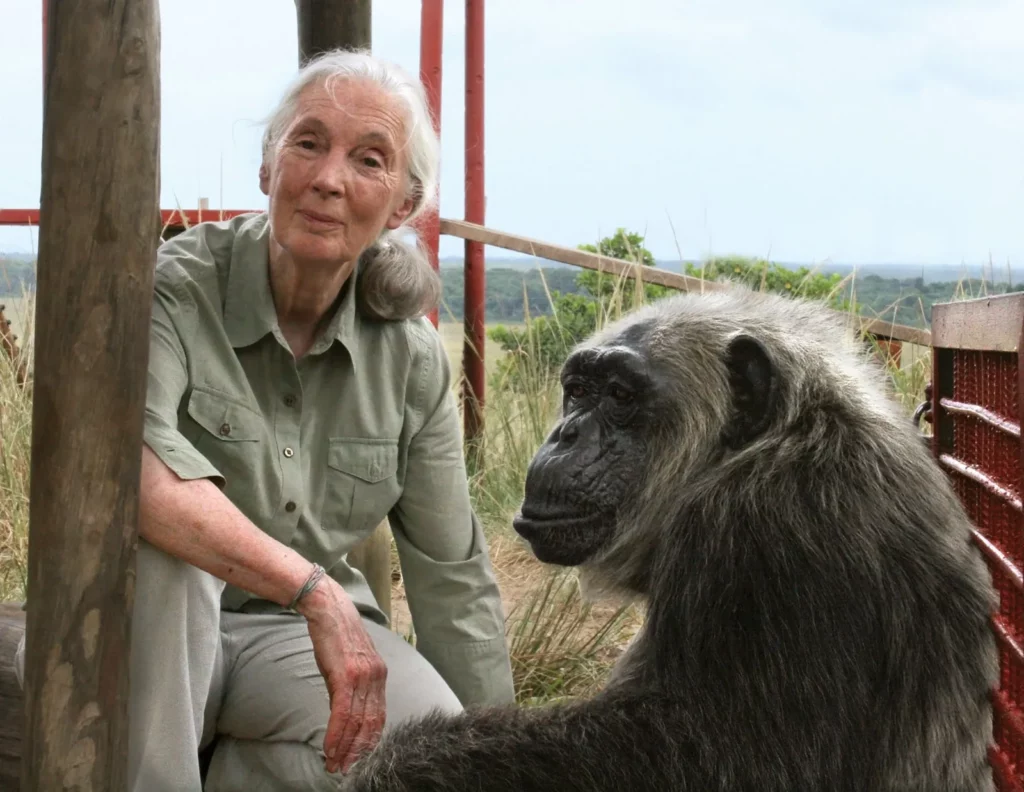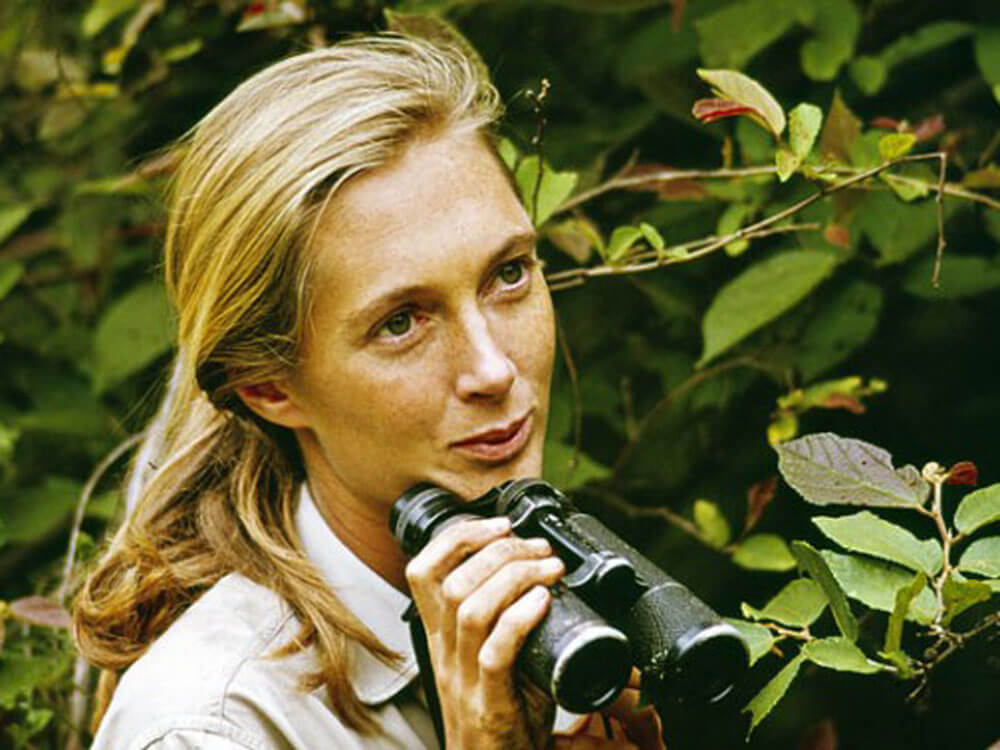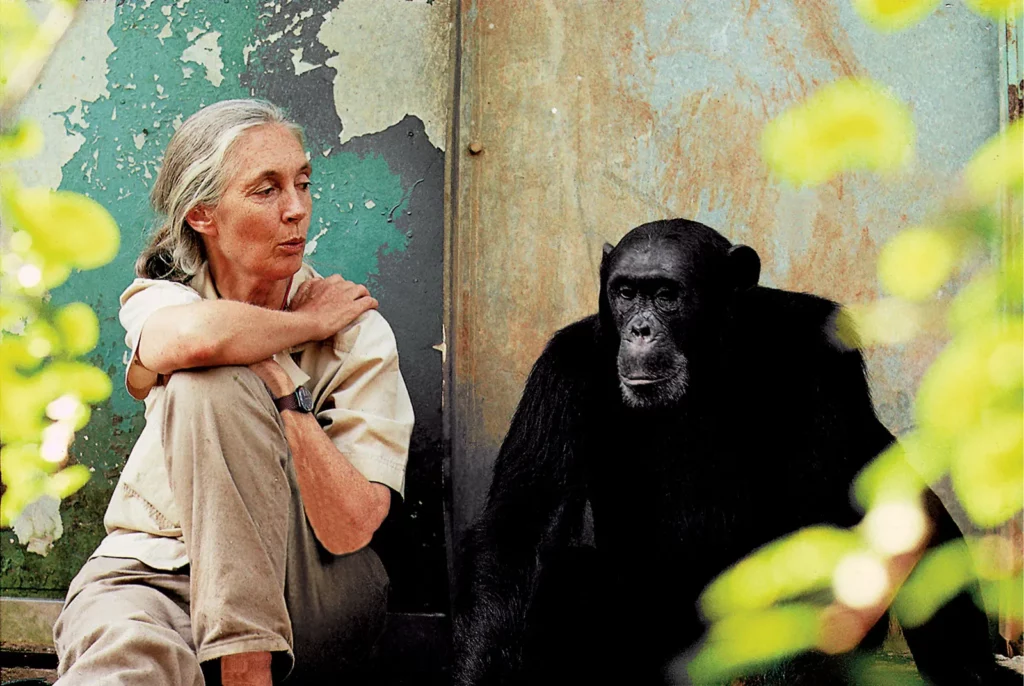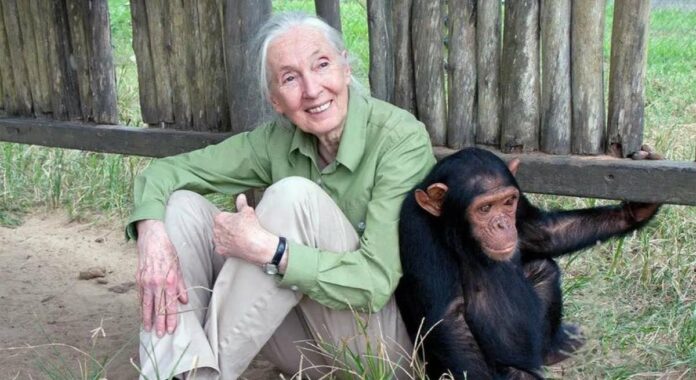An English primatologist and anthropologist, Dame Jane Morris Goodall DBE (/dl/; born Valerie Jane Morris-Goodall on 3 April 1934) was formerly known as Baroness Jane van Lawick-Goodall.
As a result of her 60 years of research on the social lives of wild chimpanzees, she is widely regarded as the field’s preeminent authority on the subject. In 1960, Goodall made her first trip to Tanzania’s Gombe Stream National Park, where she observed chimpanzees engaging in human-like behaviours including armed fighting. (Verification Failed)
She has done substantial work in the fields of conservation and animal welfare, including founding the Jane Goodall Institute and the Roots & Shoots initiative. She joined the Nonhuman Rights Project board that year (2022). In April of 2002, she was honoured with the title of UN Messenger of Peace. Dr. Goodall is a respected member of the Global Future Council’s honorary membership.
Dr. Jane Goodall was an influential English primatologist (a person who studies primates, which is a group of animals that includes human beings, apes, monkeys, and others). Her methods of studying animals in the wild, which stressed diligent observation over extended periods of time of both social groups and individual individuals, revolutionised our understanding of chimpanzees (a type of ape) as a species and influenced the way researchers studied many other species.
Who Is Jane Goodall?

Dr. Jane Goodall, now a Dame, Born Valerie Jane Morris-Goodall on April 3, 1934, in London, England, Jane Goodall is a British ethologist well-known for her exhaustive study of the chimpanzees of Tanzania’s Gombe Stream National Park.
Goodall, who had an early fascination with animal behaviour, dropped out of school when she turned 18. Before finally making it to Africa, she worked as a secretary and an assistant in the film industry.
As Goodall arrived, she began working alongside palaeontologist and anthropologist Louis Leakey. Eventually, because of her friendship with Leakey, she set up a camp in the Gombe Stream Game Reserve (now a national park) in June 1960 to study the chimpanzees there.
She wed Dutch photographer Baron Hugo van Lawick, who had been dispatched to Tanzania in 1962 to shoot her work, in 1964; the pair had a son in 1967 before divorcing the following year. In 1965, Goodall became one of the rare people to earn a Ph.D. in ethology without previously earning an A.B. from the University of Cambridge.
She later remarried Derek Bryceson, then the director of Tanzania’s national parks and a member of the Tanzanian parliament, after a divorce. Before his untimely death from illness in 1980, he helped build Gombe Stream National Park.
Jane Goodall’s Study Of Chimpanzees

On April 3, 1934, in London, England, Jane Goodall entered the world. Both of her parents worked outside the home; he in business, she in writing. Jane’s childhood was shaped by her passion for animals. In her imagination, she was already in Africa, seeing her favourite animals roam free. She had an unusual fondness for chimpanzees. When she was a kid, her favourite toy was a stuffed chimpanzee.
Jane put her money during her late teens and early twenties in preparation for a trip to Africa. She held a number of positions, such as secretary and waitress. At age 23, Jane was able to pay a visit to a friend who was living on a farm in Kenya.
Having fallen in love with the continent, Jane ultimately decided to stay. Louis Leakey, a British anthropologist, hired her to research chimpanzees after they met. I’ve never seen Jane so ecstatic. She relocated to Tanzania’s Gombe Stream National Park to study chimpanzees.
In 1960, Jane began her research on chimpanzees with no prior experience or education. Perhaps this aided her because she was able to observe and document the chimp’s behaviour in her own special way. Over the following forty years, Jane devoted her life to learning about chimpanzees. She learned a lot of fascinating new information about the creatures.
Read More: Biography Of Robert Frost (Robert Frost’s Life)
Education Of Jane Goodall

Goodall received her elementary school diploma from the Uplands Private School in 1950. And her secondary school diploma from the same institution in 1952. She eventually got a job as a secretary at Oxford University. And supplemented her income by working at a documentary film studio in London. So that she could finally go to Africa.
In the late 1950s, Goodall went to South Kinangop, Kenya, at the invitation of a childhood acquaintance. The well-known anthropologist and former curator of Nairobi’s Coryndon Museum, Louis Leakey, was introduced to her through mutual connections.
Although Olduvai Gorge is known for its abundance of preserved prehistoric remains of early predecessors of humans, Leakey recruited her as a secretary and encouraged her to join in an anthropological dig there. Moreover, Goodall was tasked with researching the vervet monkey, which is only found on an island in Lake Victoria.
Leakey thought that studying the habits of apes through time would shed light on their evolutionary history. The chimpanzee, the second-most-intelligent ape, held a special fascination for him. Very few chimpanzee studies had been successful. Either the chimps were too terrified by the scale of the safari, leading to strange behaviour. Or the researchers hadn’t spent enough time in the field to obtain a thorough understanding of the species.
According to Leakey, Goodall possessed the temperament necessary to spend extended periods of time alone in the jungle. She finally gave in to his prodding and agreed to conduct the research. As Goodall lacked any sort of scientific training or even a liberal arts degree. Many professionals were offended by Leakey’s decision to hire her.
Also Read: Biographie Be Alma Thomas
Conclusion
Eventually, Goodall focused on the plight of chimpanzees kept in captivity. Chimpanzees have been regularly employed as research subjects for human ailments. Due to their remarkable similarity to humans. Goodall utilised her expertise and notoriety to advocate for stricter controls. On the use of animals in research and for better living circumstances for test subjects.
She also fought to protect chimpanzee habitats and better the lives of zoo animals. (the places in the wild where chimps live). She has been working on these issues since 1986. When she co-founded the Committee for the Protection and Care of Chimpanzees. The Chimpanzee Family Book and With Love are two children’s books she’s authored that emphasise the need of kindness towards animals.
Goodall has earned numerous accolades for her work. Including the Gold Medal of Conservation from the San Diego Zoological Society. The J. Paul Getty Wildlife Conservation Prize, and the National Geographic Society Centennial Award.
She was presented with the third Gandhi/King Prize for Nonviolence at the United Nations in the year 2000. In Ridgefield, Connecticut, the Jane Goodall Institute for Wildlife Research, Education, and Conservation carries on much of Goodall’s present work. She now spends as much as three hundred days a year on the road. Giving speeches all over the world and spending very little time in Africa.

